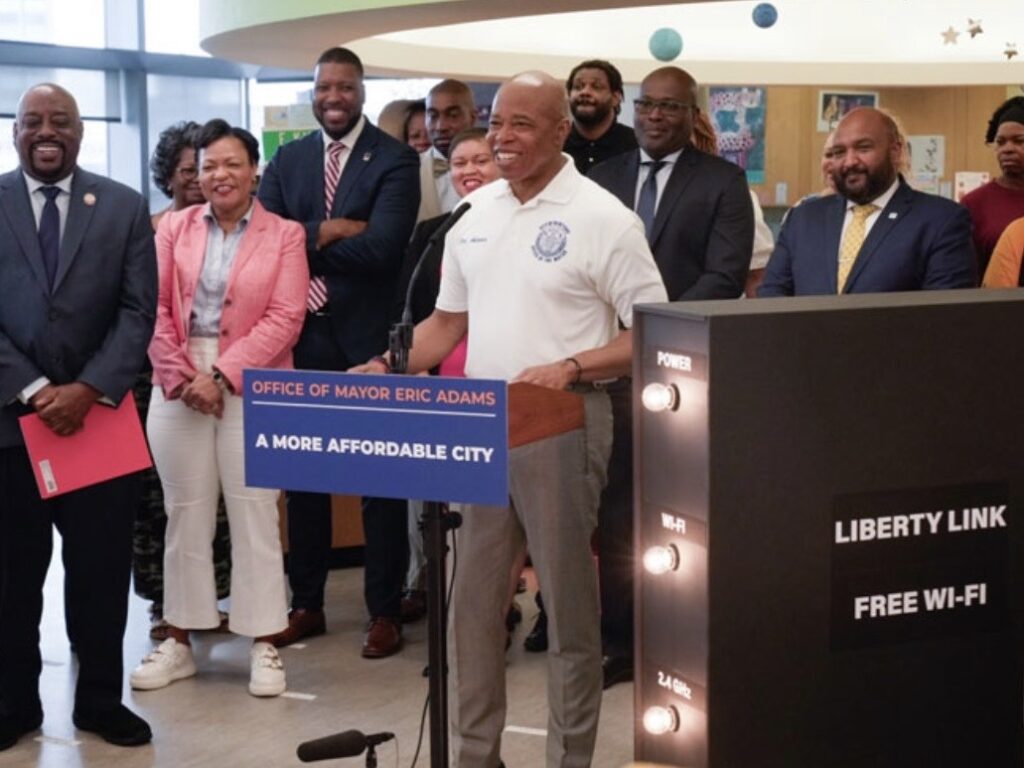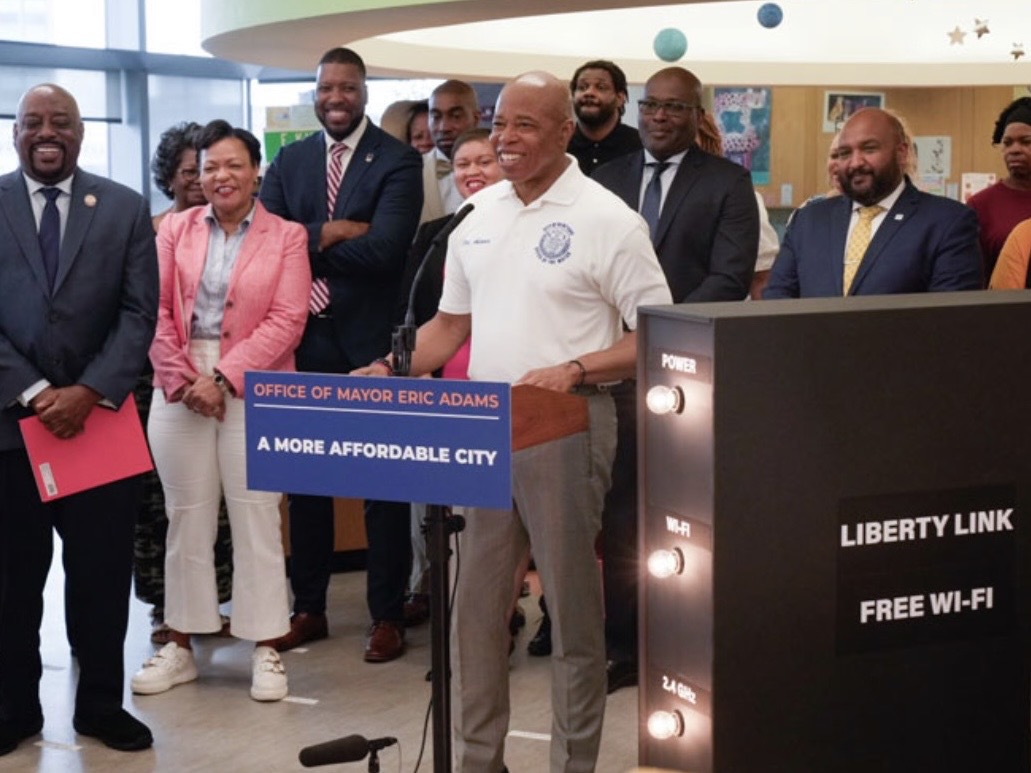
New York City is finally doing something that should have happened years ago. Mayor Eric Adams just announced a new program called Liberty Link, which aims to deliver free or low-cost internet to thousands of low-income New Yorkers. The program will focus on residents living in 100 percent affordable housing buildings across the Bronx and Upper Manhattan.
The idea is simple. If you’re living in a building covered by this program, you’ll soon have high-speed internet installed throughout your building, with no complicated signups or bills to worry about. The city has partnered with the New York Public Library and HPD to roll this out, and it’s backed by $3.25 million in funding. That money will be used to build out Wi-Fi infrastructure and fiber connections that cover 35 buildings and reach nearly 2,200 households.
I don’t usually support government subsidies, especially when they end up being flashy press releases with little real-world impact. But this one makes sense. In 2025, having reliable internet isn’t a perk. It’s a necessity. We use it for everything from applying for jobs to making doctor’s appointments, attending virtual classes, or staying connected with family. If you’re not online, you’re not part of the modern world. That’s just the reality.
So while I’m often skeptical, this move feels necessary. Every person deserves internet access, whether they can afford it or not.
This isn’t the first time Mayor Adams has tried to tackle the digital divide. Back in 2022, his administration launched Big Apple Connect, which brought free internet and basic cable to NYCHA residents. That earlier initiative reached 330,000 people across 220 public housing sites. Liberty Link is a continuation of that effort, but it expands the program to include buildings run by nonprofit housing organizations like Comunilife, Urban Pathways, Lantern Community Services, and others. Many of the people living in these buildings rely on Section 8 rental assistance and face serious barriers to getting online.
The program doesn’t stop at providing Wi-Fi. Residents will also be able to get help through a one-on-one tech education program called Neighborhood Tech Help. That means people who are unfamiliar with modern technology won’t be left behind. They’ll get support to learn how to use devices, connect to services, and stay safe online.
The city is also using this as a way to boost local businesses. About half of the program’s budget will be given to minority- and women-owned businesses to handle installation, maintenance, and operation of the internet networks. That’s good news for local economic development.
This three-year pilot will allow the city to test out different technologies and strategies. The goal is to find the most effective way to roll out a citywide internet program down the road. The first phase will begin this summer with network design and procurement, and the actual rollout is expected to start by the end of 2025.
The need is very real. A recent report found that 22 percent of households in the Bronx still don’t have home internet. Another 184,000 households across the city don’t even own a computer. These gaps aren’t just statistics. They represent missed opportunities, whether it’s for education, employment, or simply staying connected with the rest of the world.
This new initiative fits into a larger plan. The Adams administration also announced a $2.4 million investment earlier this year to improve digital access in all five boroughs. That plan includes upgrades to computer labs, a digital equity roadmap, and a push to support underserved neighborhoods.
The city is also working with libraries as part of this effort. Libraries have long been places where people go to access technology. Now they’ll help bring that access directly into people’s homes. It’s one thing to offer free Wi-Fi in a library. It’s another to give someone that same access without making them leave their apartment.
Several local leaders and organizations have already voiced support. From councilmembers to nonprofits to college presidents, the message is clear. People understand that internet access is about more than just being online. It’s about equal access to opportunity.
This program might not solve every problem, but it’s a big step in the right direction. It’s not about handouts. It’s about leveling the playing field and acknowledging that digital access is a basic need, just like heat or running water


